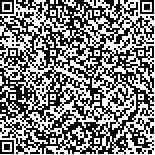下载中心
优秀审稿专家
优秀论文
相关链接
摘要

近40年来,中国的地球观测遥感卫星技术发展取得了卓越的成就,已经形成了陆地、气象和海洋3大卫星系统,正在广泛服务于中国的自然资源调查、海洋环境保护、气象灾害预测和国家重大工程等诸多领域。本文回顾了3大卫星系统的发展历程,剖析中国地球观测遥感卫星的发展现状与内在特点,归纳总结在轨卫星的文献研究热点。研究发现,中国3大遥感卫星系统的发展并不均衡,气象卫星业务较为成熟,陆地卫星发展最为迅速。遥感卫星的文献研究数量总体偏少,应用研究亟待提升。后续规划和发展应考虑陆地卫星的轨道高度差异性和波谱范围的互补性,同时增加气象和海洋卫星数量,提升卫星传感器的探测能力和时空分辨率,尤其是加快海洋卫星的业务应用能力。此外,学者们需要进一步加大国产遥感卫星数据的使用力度,加强卫星遥感数据的应用研究以进一步提升中国地球观测遥感卫星的业务能力与国际影响力。
Over the past 40 years, China has attained remarkable achievements in the development of earth observation remote sensing satellite technology. At present, the country has established three main satellite systems, including terrestrial, meteorological, and marine systems, which have been widely used in numerous applications, such as natural resource investigation, marine environmental protection, weather disaster prediction, and other major national projects. This study reviews the development history of the three major satellite systems, analyzes the development status and inherent characteristics of China’s Earth observation remote sensing satellites, and implements the CiteSpace software to summarize the research hotspot literature for all in-orbit remote sensing satellites. The terrestrial remote sensing satellite system has developed rapidly, especially in terms of small commercial satellites. Terrestrial remote sensing satellites comprise four series, including the ZiYuan, GaoFen, HuanJing/ShiJian, and other small satellites. Satellite sensors are rich, and their high spatiotemporal resolution can reach up to 0.5 m. However, they can encounter typical problems, such as uneven development, close-proximity orbital heights, and overlapping spectral ranges in similar sensors. The development of the meteorological remote sensing satellite system is the most mature among the three satellite systems. Two series of polar orbiting and stationary satellites can well detect most atmospheric elements. However, meteorological satellites are few, the spatiotemporal resolution of their sensors is relatively low, and current sensors cannot finely detect certain critical elements, such as the atmospheric wind field. The marine remote sensing satellite system has likewise made significant progress. It consists of three major satellite patterns, namely, marine water color, marine dynamic environment, and marine surveillance and monitoring satellites, which can achieve large-scale simultaneous observation of Chinese marine environments. However, this system also consists of few marine satellites, limited sensor observation elements, and low satellite sensor spatiotemporal resolution. Moreover, hotspot literature analysis shows that the total number of studies on China’s Earth observation satellites is relatively small. The disproportional ratio of articles indexed by SCI and CNKI is serious, especially on the GaoFen and ZiYuan terrestrial satellites. Numerous studies on China’s Earth satellites focus on data processing, but the application aspect is relatively weak and uneven.Therefore, the future launching of terrestrial remote sensing satellites to develop new sensors, such as lidars, is suggested. Furthermore, different orbital heights as well as the complementarity of the spectral range of different sensors should be considered. The meteorological system should launch additional satellites to carry out networking observations, improve detection capabilities for all meteorological elements, and promote the spatiotemporal resolution of new sensors to meet the refined requirements of weather forecasting and disaster monitoring. The marine remote sensing satellite system should likewise launch more satellites and shorten the launching cycle of similar satellites, improve detection capabilities for marine elements, promote the spatiotemporal resolution of new sensors, and accelerate its transformation from scientific to business-oriented research. Finally, researchers should be encouraged to utilize domestic satellite data and explore relevant studies to promote the advanced techniques of China’s Earth observation satellites.

